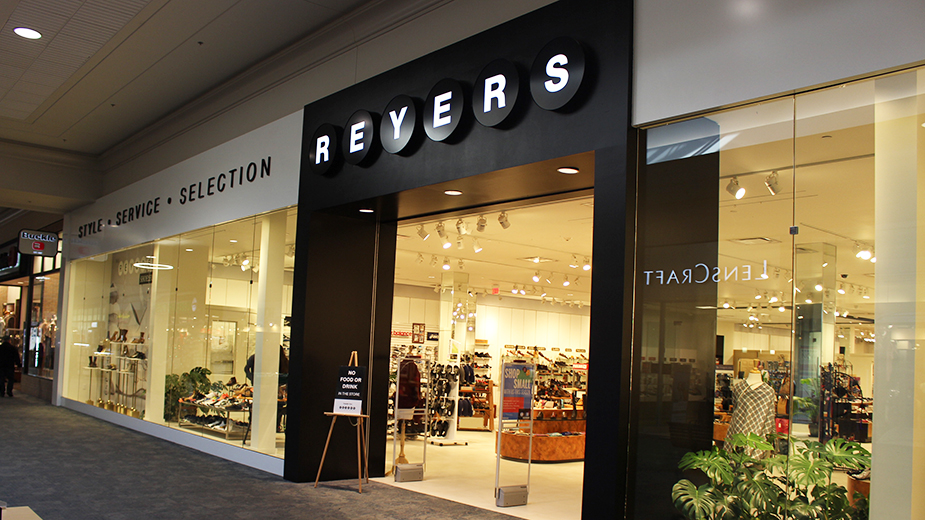YOUNGSTOWN, Ohio – The rise of e-commerce, coupled with the pandemic and the labor shortage, has dealt a 1-2-3 punch to local businesses, leaving many struggling just to keep their heads above water.
That’s why The Business Journal is launching a year-long Shop Local editorial campaign across all of our news platforms to encourage consumers to spend their dollars locally and shine a light on the issues businesses face.
Shop Local will appear in every issue of The Business Journal in 2022, featuring profiles of local businesses. The Eastwood Mall Complex and PNC Bank are sponsors of the campaign.

“I think the long-term success of our communities depends on keeping businesses local,” says the regional president of PNC Bank, Ted Schmidt.
Anthony Cafaro Jr., co-president of the Cafaro Company, which owns and operates the Eastwood Mall in Niles, says supporting bricks and mortar stores is vital to keeping local money from leaving the area and supporting the local tax base.
“That is what makes shopping local and spending your dollars locally in our community different from ordering your product online,” Cafaro says.
A recent survey by Intuit MintLife found that 57% of Americans say their main reason for shopping local is to keep their money in their communities.
A study by Fundera.com found that more than $9.3 billion would be directly returned to the economy if every U.S. family spent $10 a month at a local business.
“Those sales tax dollars pay for a lot of the services that the people in the community utilize every day, whether that’s driving down the road and it’s a smooth road or a bumpy road,” Cafaro says. “If we start pulling money away from that cycle, it’s going to have negative implications on what we’ve come to expect.”
Another benefit to shopping local is that businesses in the Mahoning and Shenango valleys tend to be more engaged with their communities.
As an example, Schmidt, who is involved with several community organizations and is the past chairman of the United Way of Youngstown and the Mahoning Valley, points to PNC’s “regional president model” and its Grow Up Great Initiative, which gives employees 40 paid hours a year to volunteer.
“What probably doesn’t get noticed that much is all the hours that we give back to the community,” he says.
“We make all our decisions locally, nobody outside the market, because our leadership says the people running the business in each market live there and understand what the needs are.”

Cafaro, who says shopping local isn’t just about businesses that happen to be owned locally, echoes that regional perspective.
As an example, he points to Subway restaurants.
“The fact is, every single Subway restaurant here in the Valley is owned and operated independently by local folks. That’s about as local as you can get,” Cafaro says.
He also notes that big chain stores, while not locally owned or operated, employ and support their local employees and their families, while also generating economic activity through ancillary services.
The biggest determinant of how much of a consumer’s dollar will stay local, Cafaro says, is whether he spends that dollar at a nearby store or online.
Fortunately, the Mahoning Valley has a large amount of retail, considering the size of the population.
“We have way more retail than if this were a small community that had grown in the past 20 years. We would never have this much retail,” Cafaro says.
In addition to the two main centers of retail, around U.S. Route 224 in Boardman and the Eastwood Mall Complex in Niles, there are also small retail hubs in communities such as Austintown and Warren.
As an example of what can happen if local stores aren’t adequately supported, Cafaro points to the retail exodus from the Shenango Valley Mall in Hermitage, Pa. Shoppers there “don’t have a lot of local options,” he says.
“People would be, I think, very upset or discouraged if a decade from now there weren’t the brick and mortar options like the Eastwood Mall, the Southern Park Mall,” he continues. “Folks, for basic shopping, would have to drive to Cleveland or Pittsburgh.”
The hollowing out of the retail corridors in a community accelerates one of the biggest concerns confronting the Mahoning Valley: the drop in population, also known as the brain drain.
By supporting local businesses and using local vendors, Schmidt says, the Valley can begin to reverse the trend and begin to see brain gain.
“There are ample jobs,” Schmidt says. “We are overcoming some of the obstacles that we’ve had over the years and this is a great place to grow a career, raise a family and be close to a lot of amenities.”
While many might overestimate the amount of e-commerce shopping done in the United States, the fact is about 65% of Americans’ shopping budgets is still done in-store, although that shouldn’t reduce the urgency of the shop-local message, says Cafaro.
“We’re taking that “buy American” concept and we’re morphing it into “buy Mahoning Valley,” he says. “Let your dollar speak and it will come back to support you.”
